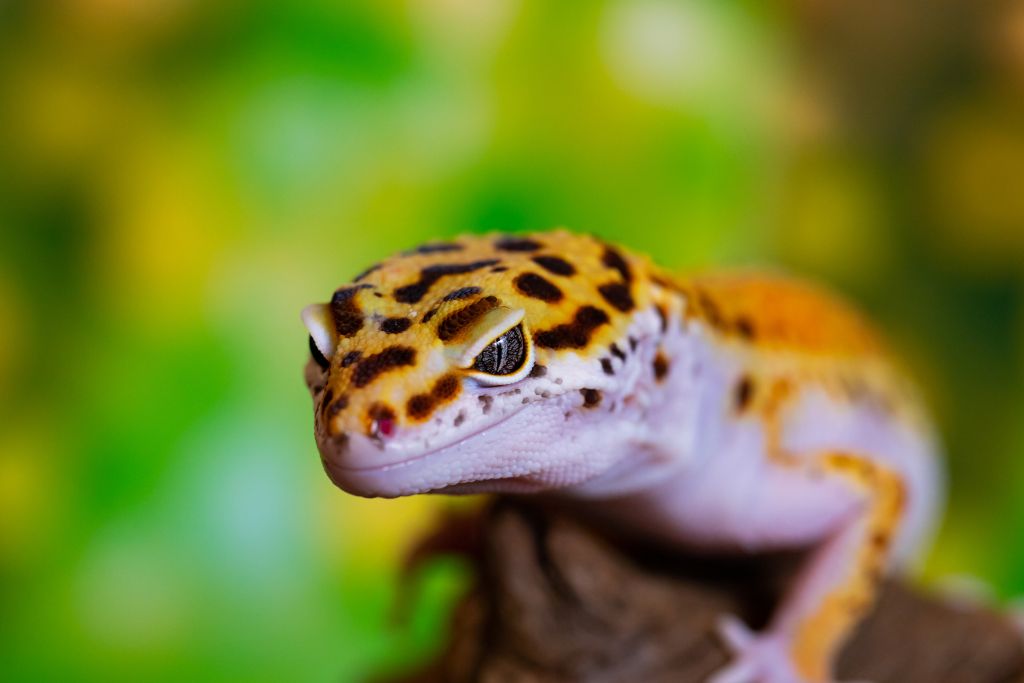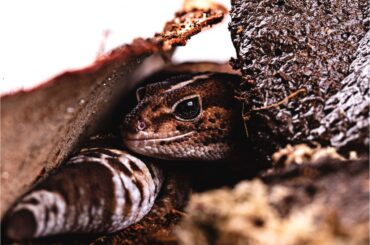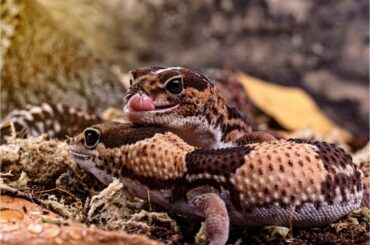Have you noticed a leopard gecko eye cloudy? Does it seem like your pet is struggling to see? Could this be a sign of a serious health issue? These questions often worry pet owners who notice cloudy eyes in their leopard geckos.
Cloudy eye is not just a cosmetic issue; it can signal underlying health problems. Quick action is crucial for your gecko’s well-being. Ignoring it could lead to more severe conditions or even permanent vision loss.
This article will explore everything from the root causes to the symptoms and treatments for leopard gecko eye cloudy. You’ll pick up tips on spotting the issue early and keeping your pet happy and healthy.
What is Cloudy Eye in Leopard Geckos?
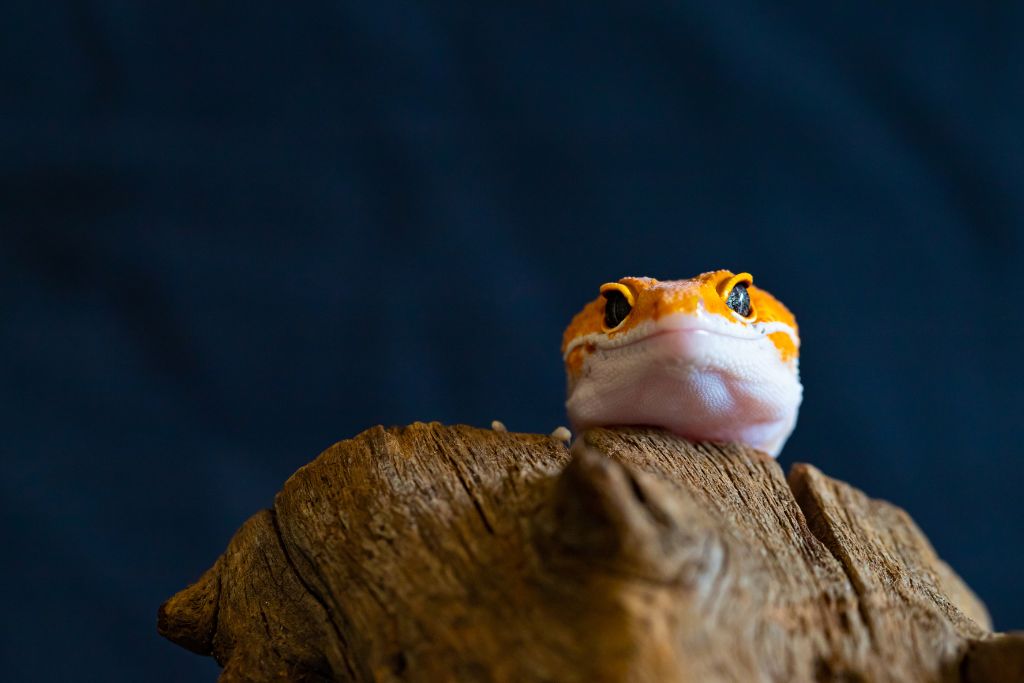
Cloudy eye in leopard geckos is a condition where a foggy layer forms over the eye. This layer can make it hard for your pet to see and may indicate health issues. Early detection and treatment are essential. If you ignore it, the condition could worsen, leading to more severe eye problems or blindness.
What Causes Cloudy Eye in Leopard Geckos?
Cloudy eyes in leopard geckos can be puzzling and concerning for pet owners. Knowing the root causes helps you act quickly and effectively. Let’s break down eight key factors that contribute to this condition.
Bacterial Infections
Dirty living conditions often lead to bacterial infections in your gecko’s eyes. Symptoms like redness, swelling, and eye discharge are common. Keeping the habitat clean and getting antibiotic eye drops from a vet will help.
Viral Infections
Viral infections, though rare, can hit harder than bacterial ones. Your gecko might not only show similar symptoms but also act lethargic. Isolating the sick gecko and consulting a vet are crucial steps.
Injury
Accidents or fights with other geckos can result in eye injuries. Physical damage and cloudiness in one eye are telltale signs. Immediate separation of aggressive geckos and a vet visit are necessary.
Poor Husbandry Conditions
Stress from bad living conditions can make your gecko more prone to cloudy eyes. Bad living conditions, like incorrect temperature, low humidity, and uncleanliness can stress your gecko. This often leads to symptoms such as cloudy eyes, reduced energy, and a decreased appetite. To fix this, ensure optimal living conditions.
Underlying Health Issues
Sometimes, other health problems, like metabolic bone disease, can appear as cloudy eyes. You may also see symptoms like limping. Regular vet visits can catch these issues early.
Allergies
New food or substrate can sometimes trigger allergies, leading to cloudy eyes. Your gecko might also itch and scratch. Identifying the allergen and consulting a vet will resolve the issue.
Parasites
Mites or ticks can infect your gecko’s eye area. Symptoms include cloudy eyes and visible parasites. Anti-parasitic treatments and a vet consultation will assist in helping your little gecko friend.
Age
As geckos age, they become more susceptible to eye issues, including gradual clouding. Regular vet visits can help you monitor your older gecko’s health.
| Causes of Cloudy Eye | Description | Symptoms | Prevention and Treatment |
| Bacterial Infections | Poor cleanliness leads to infection. | Redness, swelling, discharge. | Clean habitat, antibiotic eye drops. |
| Viral Infections | Less common but severe. | Redness, swelling, lethargy. | Isolation and vet care. |
| Injury | Physical trauma. | Physical damage, one cloudy eye. | Separate geckos, vet care. |
| Poor Husbandry | Bad living conditions. | Cloudy eyes, lethargy, loss of appetite. | Optimal living conditions. |
| Underlying Health | Other health issues. | Cloudy eyes, limping. | Regular vet check-ups. |
| Allergies | Reactions to food or substrate. | Cloudy eyes, itching. | Remove allergen and vet care. |
| Parasites | Mites or ticks. | Cloudy eyes, visible parasites. | Anti-parasitic treatments and vet care. |
| Age | Natural aging. | Gradual clouding. | Regular vet visits for older geckos. |
Recognizing Symptoms of Cloudy Eye
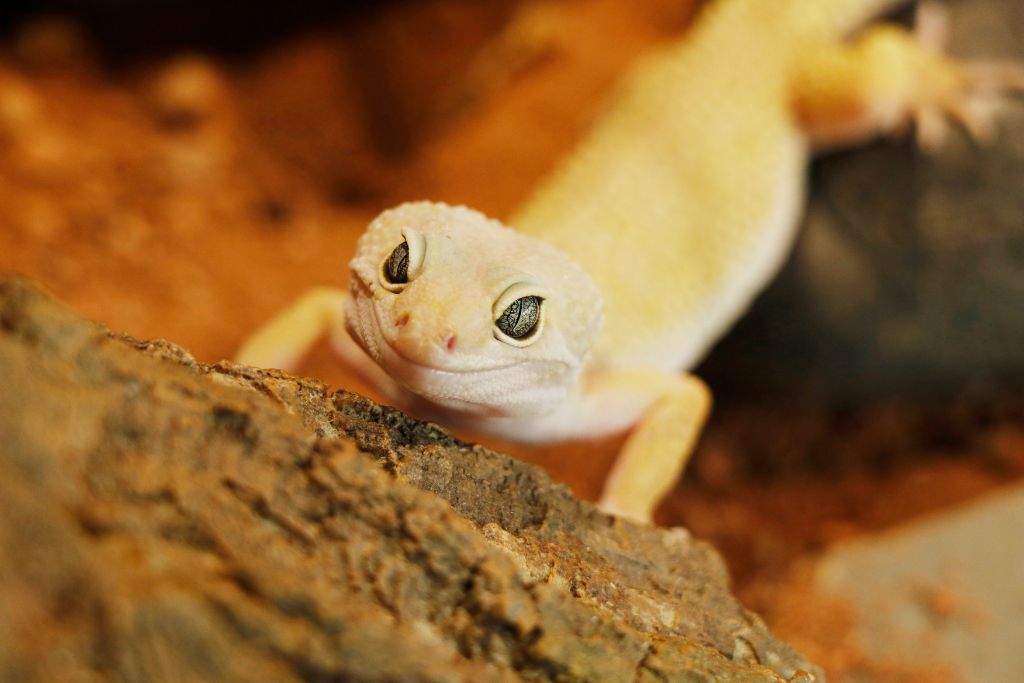
Spotting the signs of cloudy eye in your leopard gecko is the first step to effective treatment. Knowing what to look for can help you act fast. Let’s go over some key symptoms that should grab your attention.
- Milky or Hazy Appearance: The most obvious sign is a milky or hazy film covering the eye. This makes it hard for your gecko to see and can be unsettling for you as a pet owner.
- Excessive Blinking: Take note if your gecko blinks more than usual. Excessive blinking often indicates discomfort or irritation in the eye.
- Reduced Appetite: A gecko with a cloudy eye might eat less. Vision issues can make it hard for them to find food, leading to decreased appetite.
- Rubbing Eyes: You might notice your gecko rubbing its eyes against objects. This is another sign of discomfort and should prompt a vet visit.
- Swelling and Redness: Swollen or red eyes can accompany the cloudiness. These symptoms often indicate an underlying infection that needs treatment.
- Discharge: Eye discharge is a serious symptom. If you see any, consult a vet immediately for diagnosis and treatment.
- Lethargy: A gecko with a cloudy eye might seem less active. This could be due to discomfort or an underlying health issue that needs attention.
Leopard Gecko Cloudy Eye Treatment
Leopard gecko cloudy eye treatment involves several steps. Acting quickly can prevent complications and help your pet recover faster. Let’s go through the essential steps, starting with the importance of quarantine.
Quarantine
Isolate your affected gecko to prevent spreading any potential infections to other geckos. Use a separate enclosure and avoid cross-contamination by washing your hands before and after handling each gecko.
Recommended Materials
For cleaning and treating the eye, you’ll need:
- Saline solution
- Cotton swabs
- Antibiotic eye drops (as prescribed by a vet)
Cleaning and Saline Solution
Before diving into the cleaning process, let’s discuss the importance of saline solution. It’s a gentle yet effective way to clean the affected eye. Here’s how to do it:
- Create a Saline Solution: Mix one teaspoon of non-iodized salt in 1 cup of warm, distilled water. Stir until dissolved.
- Dip a Cotton Swab: Soak a cotton swab in the saline solution.
- Gently Wipe: Carefully wipe around the affected eye, avoiding direct contact with the eyeball.
- Apply Antibiotic Drops: If a vet prescribes antibiotic eye drops.
Warm and Humid Enclosure
A warm and humid environment aids in your gecko’s recovery. Keeping the skin and eyes moist aids in healing. For this, aim for a 75-80°F temperature range and 40-60% humidity. A hygrometer and thermostat can help you keep track.
Consultation with a Veterinarian
Seeing a vet is vital for proper diagnosis and treatment. Sometimes, store-bought treatments won’t cut it, particularly if a more serious issue lurks beneath the cloudy eye. To figure out what’s going on, vets may do a physical check, swab tests, or even an x-ray.
Preventive Measures
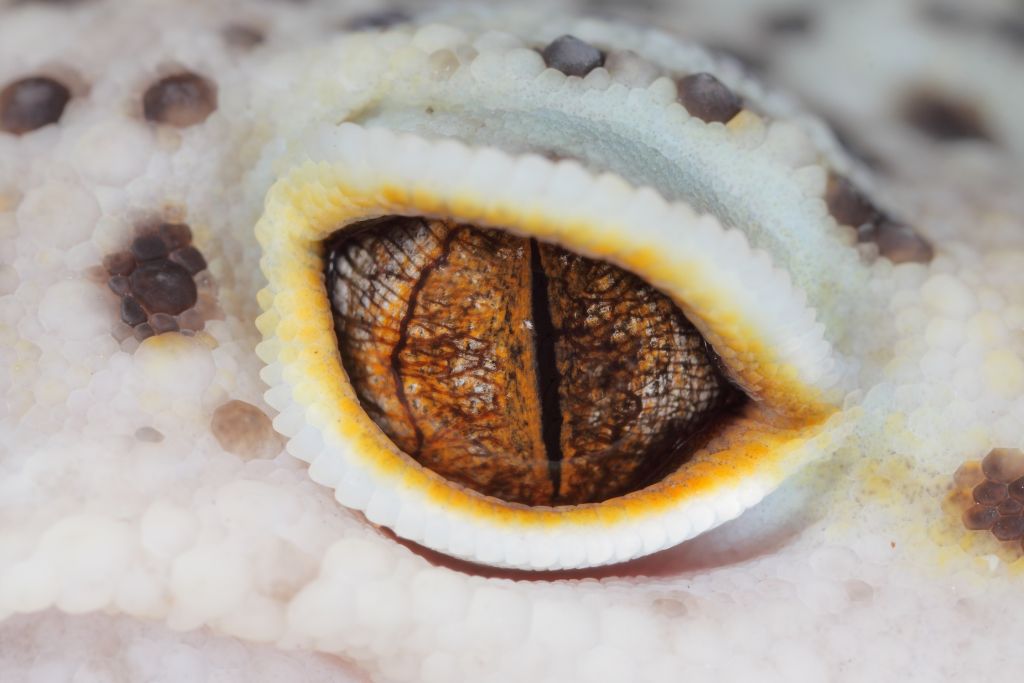
Preventing cloudy eyes starts with good care habits. You can keep your leopard gecko healthy and reduce the risk of eye issues by taking a few simple steps. Let’s look at eight ways to keep those eyes clear.
- Maintain a Clean Habitat: A clean living space is crucial. Regularly remove waste and disinfect the enclosure to prevent bacterial and viral infections.
- Balanced Diet: Feed your gecko a balanced diet of essential nutrients. This boosts their immune system and helps prevent health issues.
- Proper Shedding Conditions: Ensure your gecko has a moist hide for shedding. This helps prevent skin from sticking to the eyes, which can irritate.
- Regular Vet Check-ups: Routine vet visits can catch issues before they become serious problems. Early detection is vital.
- Quarantine New Additions: Always quarantine new geckos before introducing them to your existing pets. This prevents the spread of potential infections.
- Use Quality Substrate: Choose a substrate that doesn’t irritate your gecko’s eyes. Avoid using sand or other fine particles.
- Monitor Humidity and Temperature: Use a hygrometer and thermostat for accurate readings of your gecko’s living conditions. It’s crucial to keep tabs on both temperature and humidity.
- Avoid Overcrowding: Too many geckos in one enclosure can lead to stress and fights, resulting in injuries. Make sure each gecko has enough space.
Disclaimer: This article aims to educate but isn’t a substitute for expert veterinary care. If your pet shows signs of health issues, consult a qualified vet for diagnosis and treatment.
Conclusion
Taking care of your leopard gecko’s eyes is crucial for their overall well-being. Recognizing symptoms of leopard gecko cloudy eye early and following proper treatment steps can prevent more severe health issues. Make eye care a priority, and don’t skip those regular vet check-ups.
FAQs
How Do You Fix Cloudy Eyes on Leopard Geckos?
Quick action is vital. Consult a vet for diagnosis and treatment, including antibiotic eye drops.
Why is My Leopard Gecko’s Eye Cloudy?
Several factors can cause this, including bacterial infections, injuries, or poor living conditions. A vet can provide an accurate diagnosis.
How Do You Treat a Leopard Gecko’s Eye Infection?
A vet will likely prescribe antibiotic eye drops. Follow the treatment plan diligently for best results.

